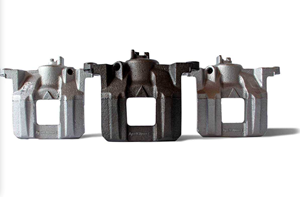California Metal Finishers React to Proposed Hex Chrome Regulations
California Air Resources Board proposes aggressive deadlines for a transition from hexavalent chromium plating to trivalent chromium.

Proposed regulations from the California Air Resources Board (CARB) regarding the use of hexavalent chromium in the state have California metal finishers bracing themselves for a dire situation.
CARB held its fourth Technical Working Group Meeting in late April regarding the rules for a widespread transition from hexavalent chromium plating to trivalent chromium. The group is now proposing the following deadlines for the transition.
- A halt on the development of any new hexavalent hard or decorative chromium electroplating facility or a new chromic acid anodizing facility effective December 31, 2021.
- Transition of existing decorative hexavalent chromium electroplating to trivalent chromium by January 1, 2023
- Transition of existing functional (hard) hexavalent chromium electroplating to trivalent chromium by January 1, 2027
- A ban on existing chromic acid anodizing effective January 1, 2032
According to the Metal Finishing Association of California (MFACA), which runs the southern and northern state chapters of the National Association for Surface Finishing (NASF), more than 100,000 people are employed at surface finishing facilities. These facilities supply coatings for the aerospace, defense, automotive, industrial, architectural and medical sectors.
“This is as damaging as it gets,” says MFACA executive director Bryan Leiker. He points out that it will affect decorative applications quickly, but functional applications aren’t far behind.
“A lot of the customers will not use the alternatives right now,” he says. “When it comes to hard chrome and chromic acid anodizing, there’s no indication that that's going to be replaceable. And even if it was, they'll still be processing for decades.”
“It’s going to knock the industry out of California,” adds Justin Guzman, president of the Metal Finishing Associations of Southern California and president of Aircraft X-Ray Laboratories (Los Angeles, Calif.).
Aircraft X-Ray processes parts for numerous aerospace and defense OEMs including Boeing, Lockheed Martin, Northrop Grumman and others. From Guzman’s point of view, pushing finishers that perform chromic acid anodizing out of state will place a burden on the rest of the country for such work for aerospace and defense.
The impetus for the shift from hexavalent chrome to trivalent is being driven by concern over emissions. The MFACA asserts that emissions contributed by the finishing operations are well within current regulations and are a small percentage of total emissions.
“The technology’s there to control these processes and reduce the emissions — which we have done,” Leiker says.
Guzman points out that California is probably the most heavily regulated state in the country for air quality. Like other finishers, Aircraft X-Ray Laboratories is subjected to quarterly Air Quality Management District (AQMD) inspections which Guzman says are run with the line exceeding its normal operations to produce worst-case scenario results.
“We went 1000 amps for three runs for an hour nonstop,” he says. “Real-world we’re at 200-300 amps, it ramps up for five minutes, runs for 20 minutes and then shuts off.”
All of this to say that most finishers’ emissions are typically less than what is produced during AQMD inspections. Guzman adds that even at this point, the emissions from finishing operations are a drop in the bucket when it comes to overall contributors.
“When it’s all said and done we’re only around one percent of emissions,” Guzman says. “If you got rid of us completely, you’d still have 99% of the problem — and you’re getting rid of hundreds of thousands of jobs.”
The MFACA is asking anyone involved in metal finishing from employees to OEMS utilizing finishing services to reach out to CARB regarding the impact these rules will have on the surface finishing industry. Contact Eugene Rubin of CARB at Eugene.rubin@arb.ca.gov or call 916-323-0006.
Related Content
How to Maximize Nickel Plating Performance
The advantages of boric acid-free nickel plating include allowing manufacturers who utilize nickel plating to keep up the ever-changing regulatory policies and support sustainability efforts.
Read MoreNickel Electroplating
Applications, plating solutions, brighteners, good operating practices and troubleshooting.
Read MoreIn-House Blackening of Ferrous and Non-Ferrous Metals
Process satisfies customers’ shipping requirements while meeting stricter water regulations in times of drought.
Read MoreRead Next
Powder Coating 4.0: Smarter, Faster, More Efficient and Connected
New tools reduce cost and waste, lower manufacturing footprint of powder coating operations.
Read MoreEpisode 42: An Interview with Robin Deal, Hubbard-Hall
Hubbard-Hall wastewater treatment specialist Robin Deal discusses the latest trends in wastewater management.
Read MoreThe 2024 Ford Mustang: All the Colors Available
Although Chevrolet has announced the end of the Camaro and Dodge is offering “Last Call” editions of the Charger and Challenger, the Ford Mustang is launching to its seventh generation.
Read More


























